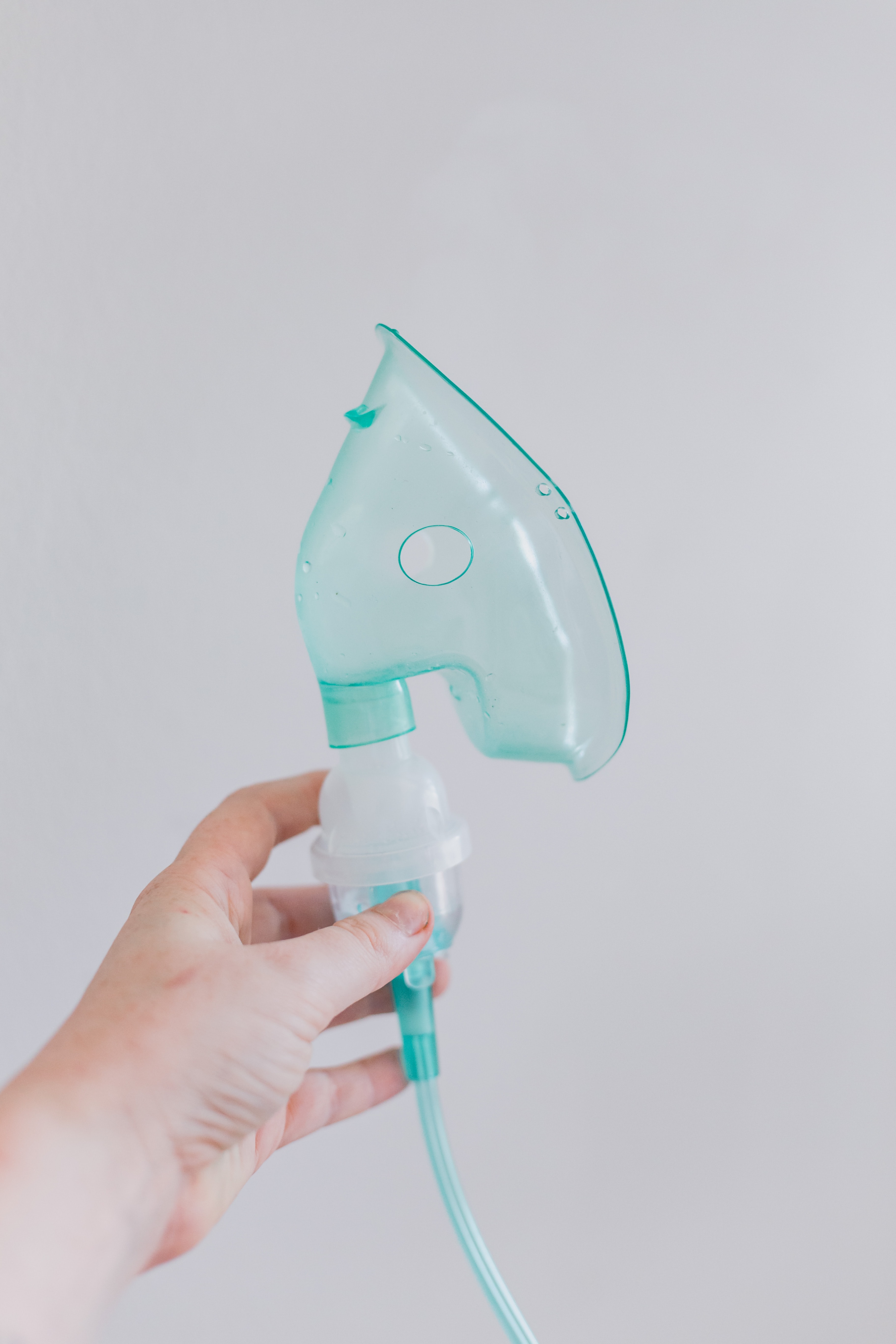Bronchodilators: Uses, Types, and Side Effects
A complete guide to bronchodilators
What are bronchodilators?
Bronchodilators are drugs used to relieve asthma symptoms, allergic rhinitis, and chronic obstructive pulmonary disease (COPD). These drugs help dilate—or widen—the organs (bronchi) that allow airflow to and from the lungs. These organs are known as the respiratory tract, or airways. By widening the airways, bronchodilators make airflow in and out of the lungs easier. This action also helps mucus move more freely through the airways. The wider and more relaxed the airways are, the easier it is to remove mucus from the lungs and respiratory tract.
Most bronchodilators are supplied as oral inhalants, administered through inhalers or nebulizers. Inhaled bronchodilators help ensure the medication gets to the lungs as quickly as possible. There are two types of bronchodilators: short-acting and long-acting. Short-acting bronchodilators offer quick relief from symptoms caused by asthma and other lung diseases. Long-acting bronchodilators will not provide immediate symptom relief but will help prevent symptoms throughout the day.
It’s important to note that bronchodilators are intended for symptomatic relief. They help patients diagnosed with asthma, COPD, or other lung diseases manage these conditions and improve their quality of life. These drugs will not cure asthma or COPD.
For more information about inhaler availability and the cost variance between asthma treatment options, check out our blog. You can also book a video doctor visit for asthma to talk to a licensed health care provider about your symptoms and the best treatment plan for you.
What are bronchodilators used for?
Bronchodilators are primarily used to reduce and prevent the symptoms of asthma, COPD, and other lung conditions.
Asthma is a chronic inflammatory condition that narrows and irritates the lungs’ airways. Asthma affects nearly 24 million Americans. It is a prevalent, non-contagious respiratory disease that usually begins in childhood and continues into adulthood. Asthma may vary in severity from person to person.
Common asthma symptoms include:
- Chest tightness
- Shortness of breath
- Difficulty breathing
- Coughing
- Wheezing
Chronic obstructive pulmonary disease (COPD) is an umbrella term for several diseases that cause airflow blockage and difficulty breathing. This includes emphysema and chronic bronchitis.
If left untreated, COPD can get worse over time. This can lead to severe complications like heart problems, an increased risk of respiratory infections, and a higher risk of lung cancer.
Common COPD symptoms include:
- Shortness of breath
- Difficulty breathing
- Coughing
- Wheezing
Bronchodilators work by relaxing the smooth muscles that surround the respiratory tract. This relaxation helps open the airways that carry air to and from the lungs. Wider airways make it easier for air to flow back and forth from the lungs. This widening also makes it easier to clear mucus from the lungs. Overall, this dual action improves lung function and reduces symptoms of bronchospasm.
The Food and Drug Administration (FDA) has approved bronchodilators to help manage the symptoms of asthma, COPD, and other respiratory conditions. These drugs will not cure asthma or COPD. There is currently no cure for either of these conditions. Bronchodilators help patients manage these conditions while improving their overall quality of life.
What are the different types of bronchodilators?
There are two primary forms of bronchodilators and three sub-classes of bronchodilator drugs. Short-acting bronchodilators provide quick relief from symptoms caused by an asthma attack or bronchospasm. Short-acting bronchodilators are supplied in a small canister meant to be administered via an inhaler. Long-acting forms work to prevent symptoms of asthma attacks and bronchospasms for up to 12 hours. These drugs will not provide quick relief for symptoms that are already occurring. Instead, they help keep airways open throughout the day, which can reduce the risk of these symptoms.
Within these two forms, there are three sub-classes of bronchodilator drugs. These classifications are detailed below.
Beta-2 agonists:
Beta-2 agonists help relax the smooth muscles surrounding the airways in the lungs during bronchospasms. They do this by stimulating beta-2 receptors in these muscles, causing them to dilate.
Examples of short-acting beta-agonists (SABAs) include:
- Albuterol/ Salbutamol (generic for Ventolin HFA, Proair HFA, and Proventil HFA)
- Levalbuterol (generic for Xopenex)
- Pirbuterol (generic for Maxair)
Short-acting beta-agonists are usually supplied as a metered-dose inhaler (MDI). This medical device sprays a pre-set dose of medication through your mouth and into your airways.
Examples of long-acting beta-agonists (LABAs) include:
- Salmeterol (generic for Serevent)
- Formoterol (generic for Foradil)
- Vilanterol (Breo)
LABAs are commonly administered via a dry powder inhaler along with a form of inhaled corticosteroid. These inhaled steroids help reduce swelling and inflammation in the airways.
Anticholinergics:
Anticholinergic bronchodilators work by blocking the effect of an enzyme known as acetylcholine. Acetylcholine plays a vital role in brain function and muscle contractions. The nervous system's release of it may also cause the airways to constrict and narrow. Anticholinergic bronchodilators are primarily used as long-acting agents that prevent the onset of asthma and COPD symptoms. They are commonly supplied via an inhaler or a dry powder administered through a nebulizer. Usually, these drugs are combined with bromide, a naturally occurring substance with antiepileptic properties.
Examples of anticholinergic bronchodilators include:
- Ipratropium bromide (generic for Atrovent)
- Tiotropium bromide (generic for Spiriva Respimat)
- Umeclidinium (generic for Incruse Ellipta)
Theophylline:
Theophylline is rarely prescribed by health care providers anymore due to its significant risk of side effects.
In most cases, a health care provider will prescribe a combination of short-acting and long-acting medications to prevent symptoms and offer quick relief when needed.
What are the common side effects of bronchodilators?
Bronchodilators play a crucial role in helping patients manage the symptoms of asthma and other lung conditions. In general, their benefits outweigh any possible risks of adverse effects. That being said, bronchodilators have been shown to cause some side effects.
Common side effects of bronchodilator use include:
- Dry mouth
- Nervousness/ restlessness
- Heart palpitations
- Increased heart rate
- Muscle cramps
- Headaches
Inform your provider if you are currently managing any medical conditions before starting treatment with a bronchodilator. You should also tell them about any and all medications and supplements you are taking before using a bronchodilator. This will help prevent any serious drug interactions.
Bronchodilator use may be discouraged for patients taking blood pressure medication, antidepressants, and certain sedatives. In most cases, women can use bronchodilators when pregnant or breastfeeding. Even so, you should tell your health care provider if you’re breastfeeding or pregnant before starting treatment with a bronchodilator.
Do I need a prescription for bronchodilators?
In most cases, yes! As we’ve detailed, several over-the-counter asthma treatment options are available for purchase without a prescription. However, these drugs are far less effective than prescription drugs and have a significantly greater risk of severe adverse effects. While OTC options exist, you should receive prescription medication to treat asthma and COPD symptoms properly.
Providers on Sesame can write a prescription – or refill an existing one – during a virtual or in-person visit. Depending on the medication, you can arrange for same-day pickup at a pharmacy near you or order the medication to be delivered to your door for just $5. Book an online consultation with a real, licensed provider on Sesame today to determine whether or not antihistamines are right for you.
If you are experiencing asthma symptoms, book an online doctor visit on Sesame to discuss your symptoms and possible treatment options with a licensed health care provider right away.
Related posts

Over-the-counter asthma inhalers may provide relief for asthma symptoms. Learn more about these medications, how they work, and your best treatment options.

It can be difficult to figure out the best treatment plan for your health. We’ve compared the cost of asthma inhalers and detailed the pros and cons of each.

Antihistamines are a class of drugs used to treat the symptoms of allergies. This includes symptoms like sneezing, watery eyes, and difficulty breathing.

In this blog article, we’ll break down several easy at-home and OTC remedies to eliminate excess mucus and phlegm from your airways, nose, and throat.

Antihypertensive drugs–also known as antihypertensive agents–are a class of medications used to treat high blood pressure. Learn more about these drugs.

Diuretics are commonly supplied as oral capsules. The diuretic drugs used to treat high blood pressure and heart failure are only available via prescription.

Lung capacity is the amount of oxygen the lungs can hold. It is a vital marker of your lung function and overall well-being. As you age, your lung capacity starts to decrease.

Respiratory Syncytial Virus (RSV) is a viral infection of the lungs and upper respiratory tract (the breathing passages of the nose and throat).

Cost factors for a computed tomography (CT) scan
